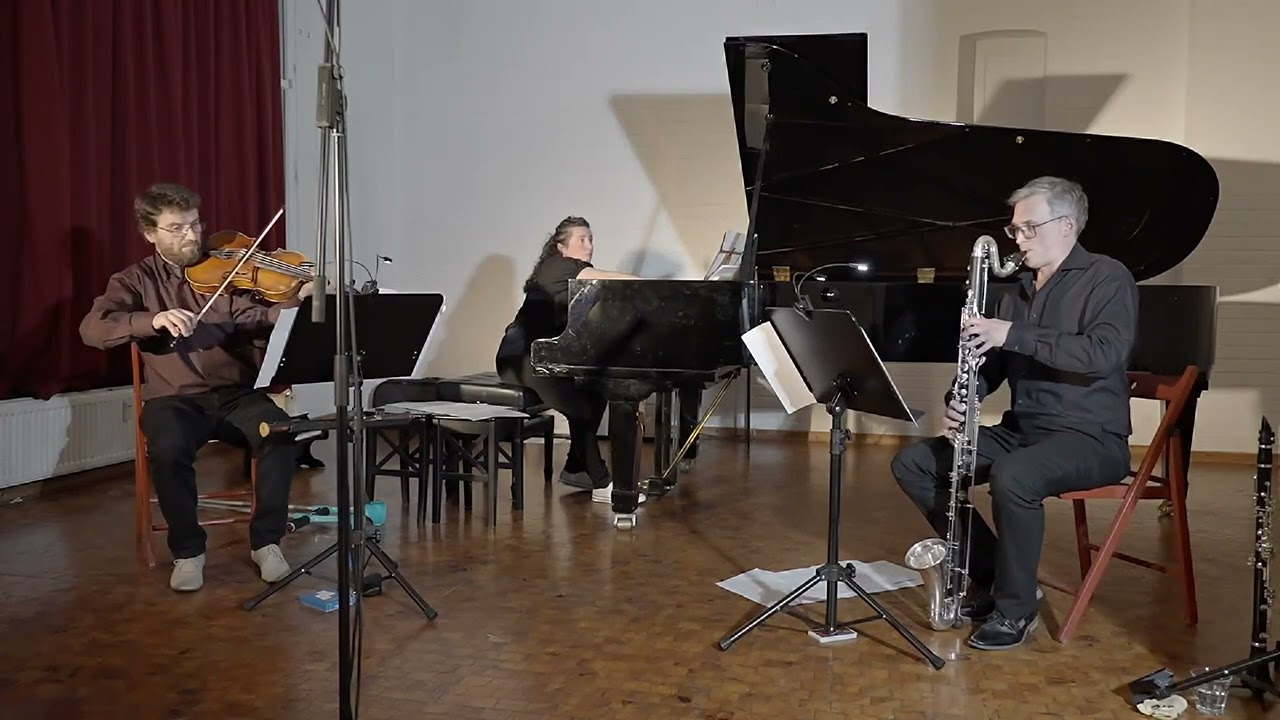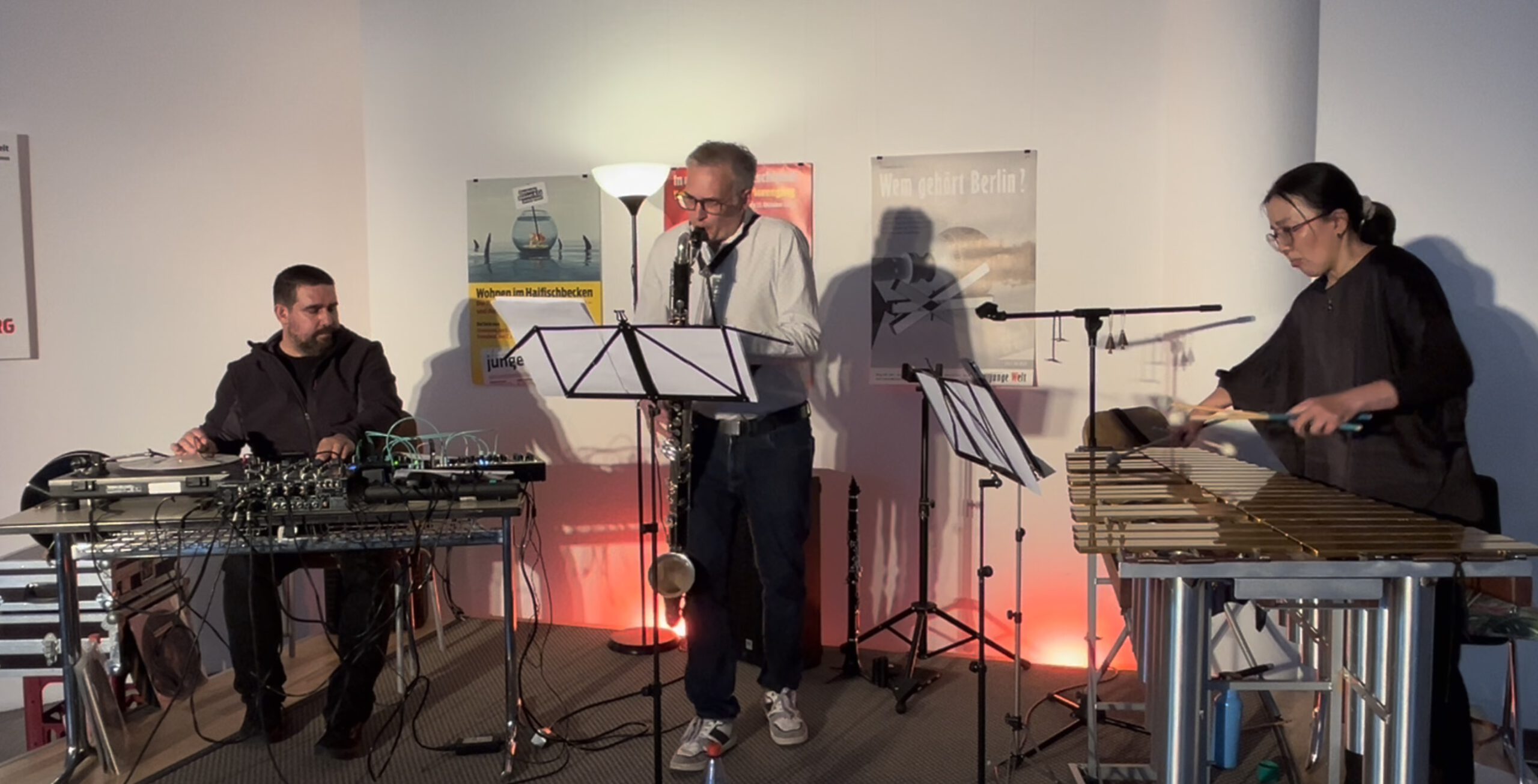Respiro
for bass clarinet solo
Since the beginning of my training as a woodwind player (I first learned saxophone, then clarinet and bass clarinet), the human breath has naturally been of great importance to me. As the basis and motor of sound production, it is an indispensable prerequisite for the wind instrument and an integral part of music-making, even though in traditional music-making practice it is condemned to inaudibility and thus de facto to musical irrelevance: pauses in breathing should be as short and imperceptible as possible, inhalation should not be audible under any circumstances and likewise any “background noise” that the air could cause should be eliminated.
I have always been fascinated by the great wealth of subtle tonal shadings that the air in the instrument holds within itself if we give it the space to do so. Respiro (Italian = breath) follows this fascination and focuses on breath as the basis of instrumental playing – as well as our existence – and its transition to musical tone.
The composition process for this piece was completely different from my usual way of working. Normally my compositions – after an initial phase of research and the search for tonal and technical possibilities on the instrument, which often takes place in close exchange with the performers – are created exclusively at the desk by calculating the form and dramaturgy and meticulously shaping the musical structure.
Writing a solo piece for bass clarinet presented me with an unusual situation, as I had previously composed for the instrument (and myself as a performer) only for ensemble contexts, and I had always improvised solo pieces in concerts up to that point, in keeping with my background as a jazz and improvisational musician. So, I chose a hybrid approach for Respiro, defining different musical material and recording short improvisations with it. These improvisations gave rise to further ideas and progressions, which I again fleshed out improvisationally.
Thus, the entire composition process unfolded as an interplay between planned notation and spontaneous reshaping and development up to the point where the score was almost finished and I recorded the whole piece in a final correction run, adding the last improvisatory additions. In this respect, the question of whether sound or writing came first can no longer be resolved in this work but is dialectically suspended in it.
The original cell of the piece is the simple inhaling and exhaling movement without an instrument, from which the slow basic tempo and the meditative atmosphere of the piece develop. The breathing movement is gradually “musicalised”, whereby the distinction between three types of breathing is important for the musical structure: Firstly, inhalation and exhalation, which I have called cyclic breathing and which is rhythmicised and coloured in various ways; secondly, musical breathing, as it occurs in “normal” clarinet playing with its greatly shortened, inaudible inhalation and the long, forced exhalation; and thirdly, circular breathing, which allows inhalation and exhalation to proceed simultaneously and takes place in the dramaturgical culmination of the piece.
Much of the piece is in the piano-pianissimo range, as the air sounds are naturally quiet. Where transitions into concrete tones occur, these also remain at a low dynamic level. Rarely do tones appear in the traditional sense; most definite pitches occur in the form of multiphonic sounds, which, due to their complex overtone structure, have a greater proximity to the noisiness of the air sounds and produce “secondary air” of their own accord.
The transition between air noise and pitch, however, starts even before the reed begins to vibrate and thus before the actual production of sound. First of all, there is a multitude of shadings of the air, similar to the way different cymbals can be shaded on a drum kit without being able to specify an exact pitch. On the one hand, this tonal differentiation is achieved by the part of the instrument on which the air is blown: With a largely normal embouchure into the instrument, from some distance onto the reed, onto the mouthpiece removed from the instrument or completely without the instrument as an inhale or exhale. On the other hand, the shaping of the oral cavity is decisive, which is indicated in the score under each air sound by a phoneme according to which the oral cavity is to be shaped.
The clearest transition into the domain of concrete pitches, however, results from a technique I developed some years ago in an improvisational context. In this technique, the upper incisors remain in their normal position on the mouthpiece, while the lower jaw opens, detaches the lip from the reed and lets the air hit the reed with a tongue position similar to the syllable [chi] as pronounced in German. This produces a powerful air sound that contains a shadowy audible pitch that is used in the lower two octaves of the instrument for quasi-expressive melodic phrases.
Respiro_Vorschau

